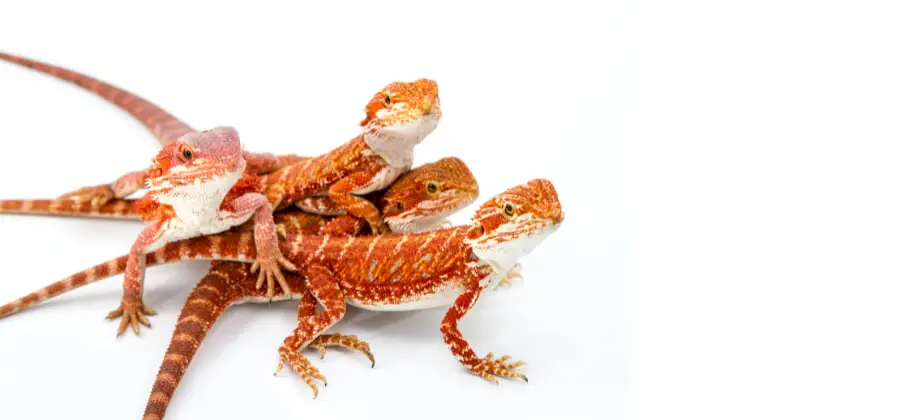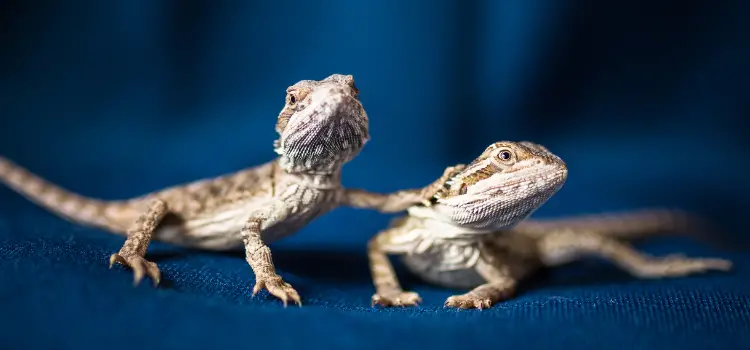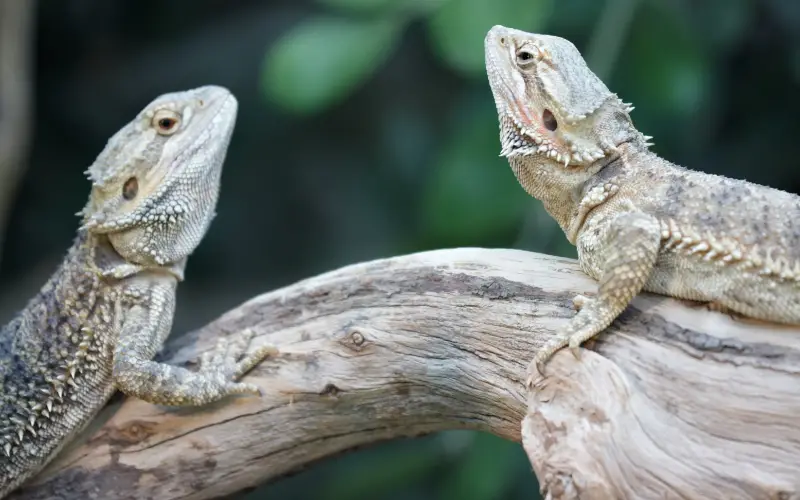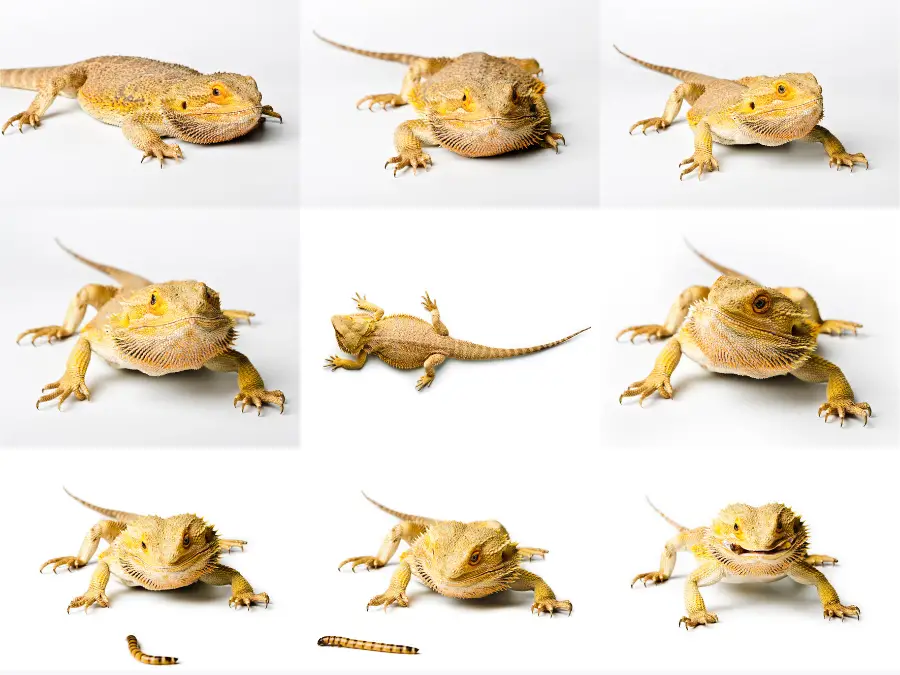Are you curious about how to tell if a bearded dragon is male or female? Knowing whether your pet is a male or female is essential for proper care and understanding their unique needs. In this guide, we will explore the key indicators to identify the sex of your Bearded Dragon, including bearded dragon behavior, physical characteristics, and internal sex organs.
From black beards and thicker beards in males to single bulges and larger bodies in Female Dragons, experienced owners can learn to distinguish the sexual characteristics of these fascinating reptiles. Let’s delve into the world of determining the bearded dragon gender.
How to Tell if a Bearded Dragon is Male or Female: Overview

Bearded dragons are popular pets among reptile enthusiasts, known for their docile nature and unique appearance. One common question among bearded dragon owners is how to determine the sex of their pet, as it aids in proper housing, care, and breeding.
Identifying if a bearded dragon is male or female may seem challenging initially, but with a bit of knowledge and observation, it can be done quite easily.
Sexual dimorphism is present in bearded dragons but may not be as apparent in juveniles. However, as they mature, these differences become more visible. Males generally have a wider skull base and exhibit territorial behavior, while females are typically smaller and more submissive.
Observing your bearded dragon’s physical traits and behavior can help you determine its sex, ensuring that you provide the most appropriate care for your pet.
Additionally, there are specific methods to identify the gender of a bearded dragon, such as examining the reproductive organs located near the base of its tail. By carefully examining this area, one can look for the presence of hemipenal bulges, which indicate a male bearded dragon, or the absence of these bulges, which signifies a female.
In the following sections, we will delve further into these methods and other helpful tips for determining the sex of your bearded dragon.
Physical Traits for Sexing Bearded Dragons

Head Size and Shape
Male and female bearded dragons often have differences in head size and shape. In general, males tend to have larger heads compared to females. The skull base may be wider in males, giving their heads a more robust appearance.
This difference can help in determining the sex of a baby bearded dragon, though it may not be definitive, as individual variations exist.
Tail Base
A key difference between the sexes lies in the tail base. Males typically exhibit thicker and broader base at the tail, just beneath their vent.
This is due to the presence of larger hemipenal bulges in males, which are necessary for reproduction. In females, these bulges are either smaller or not present, leading to a narrower tail base.
Tail Size
Apart from the tail base, overall tail size can also be different between male and female bearded dragons. Males generally have thicker tails than females, which can be noticed not just at the tail base but also along its entire length. This difference may be more apparent when comparing adult individuals.
Body Size
Differences in body size can also be observed when sexing bearded dragons. Males tend to be larger than females, but this distinction may not be as evident in juveniles. In adult bearded dragons, males can grow to be longer and heavier than their female counterparts.
However, it is important to note that individual variations in size exist and relying solely on body size for sex determination may result in inaccuracies. Careful examination of other traits, such as head size and tail structure, is necessary for accurate sex determination.
By carefully examining the head size and shape, tail base, tail size, and body size of a bearded dragon, it is possible to make an educated guess about its sex. While individual variations may exist, these physical traits can provide useful information to help distinguish between male and female bearded dragons.
How to Find the Sex of Your Bearded Dragon? Watch this video
Behavioral Differences Between Male and Female Bearded Dragons
Bearded dragons show distinct behavioral differences between males and females, which can help determine their sex. We will discuss these differences in the following sections.
Territorial Behavior
Males generally display more territorial behavior than females. They claim and defend their territory. If they sense a threat, males will exhibit aggressive postures and behaviors to ward off other males or predators. Females, on the other hand, are less aggressive and more submissive.
Mating Season
During the mating season, males often become more aggressive and engage in ritualized displays to attract females. For example, they’ll perform noticeable head bobbing to impress females and assert their dominance. Females are generally more passive, responding to males with a behavior called the female head roll.
Arm Waving
Arm waving is another unique behavior seen in bearded dragons. While both males and females perform arm waving, females are more likely to use this behavior as a submissiveness signal, acknowledging the dominance of a male.
Males might also wave their arms to communicate with other males, asserting their presence in a territory.
Head Bobbing
Head bobbing is a common characteristic of bearded dragons, serving various purposes depending on the context. Males often perform head bobbing as an aggressive display to establish dominance or warn off other males. They may also use it during courtship to signal interest in a female or advertise their territorial claims.
Females, however, may respond to males with a less vigorous head bob, showing that they acknowledge the male’s presence but do not intend to challenge him.
Taking these behaviors into account when observing bearded dragons can help you differentiate between males and females. Always remember to approach and handle these animals carefully, as aggressive behaviors can escalate if they feel threatened or stressed.
Identifying Gender Through Cloacal Characteristics

Bearded dragons, like many reptiles, have subtle physical differences that can help determine their gender. One of the key areas to examine is the cloaca, which is an opening used for both waste elimination and reproduction.
By looking at specific characteristics such as hemipenal bulges, femoral pores, and the size of the cloacal opening, you can more accurately identify the gender of your bearded dragon.
Hemipenal Bulges
Males typically have two bulges on either side of their tail base that are more prominent than in females. These bulges are called hemipenal bulges and are a result of the male’s hemipenes, or reproductive organs, being located within the base of the tail.
Female bearded dragons may have a very slight bulge in the same area, but it will be much less noticeable.
Femoral Pores
Femoral pores are another sign to look for when identifying the gender of a bearded dragon. These pores, which secrete a waxy substance, are found on the underside of the thighs in both males and females.
However, they are typically more pronounced and visible in males, who use secretions for marking territory and attracting mates. Males will often have larger and more noticeable femoral pores than females.
Cloacal Opening
The cloacal opening itself can also help in determining the gender of a bearded dragon. Males generally have a wider, more pronounced cloacal opening compared to females, who tend to have a narrower, more tapered opening. The wider cloacal fold and thicker tail base are more prominent in males, which can aid in identifying their gender.
In conclusion, observing the cloacal area’s specific characteristics – hemipenal bulges, femoral pores, and the cloacal opening – can help identify the gender of your bearded dragon.
Although these physical differences may be subtle, they are reliable indicators when trying to determine if your bearded dragon is male or female. It’s essential to handle your bearded dragon gently and with care when examining these sensitive areas.
Alternative Methods for Determining Gender

In addition to visual inspection and evaluation of physical characteristics, there are alternative methods for determining the gender of a bearded dragon. This section will introduce two such methods: the flashlight method and seeking a professional veterinarian check.
Flashlight Method
The flashlight method is a popular technique among reptile enthusiasts for sexing bearded dragons. This non-invasive method involves shining a flashlight on the underside of the lizard, close to its vent, to examine the internal structures in the tail base.
To perform the flashlight method:
- Ensure the bearded dragon is comfortable and relaxed.
- Gently turn the bearded dragon onto its back, exposing the vent area.
- Shine a flashlight on the underside of the tail near the vent, taking care not to shine it directly into the eyes of the animal.
- Look for the presence of two elongated structures, known as hemipenal bulges, which are indicative of a male bearded dragon. Female bearded dragons will typically have a single, smaller bulge in the center.
It’s crucial to handle the bearded dragon gently during this process to avoid causing stress or discomfort. While this method can be effective, it may not always provide definitive results, as it can be challenging to identify structures in some cases correctly.
Veterinarian Check
A more reliable method for determining the gender of a bearded dragon is to consult a veterinarian with experience in reptile care. They can perform a physical examination and use advanced diagnostic techniques, such as ultrasound, to accurately identify the sex of the animal.
Having a vet perform a check not only provides more definitive results but also ensures your bearded dragon’s welfare. The veterinarian can also offer tips on proper care, addressing any concerns or questions you might have about the appropriate diet, temperature, and lighting requirements for your bearded dragon.
In summary, alternative methods for determining the gender of bearded dragons include the flashlight method and seeking a professional veterinarian check. Though the flashlight method can be useful, it may not always provide definitive results. A veterinarian check, however, can offer a more accurate and reliable assessment of your bearded dragon’s gender.
Sexual Maturity and Reproduction

Sexually Mature Bearded Dragons
Bearded dragons (Pogona vitticeps) can reach sexual maturity as early as five to six months, with some taking up to 15-16 months. Both males and females undergo changes during this period, and certain characteristics can help in distinguishing the gender. Some of the sexually dimorphic traits are:
- Femoral pores: Males have larger and more pronounced femoral pores than females.
- Tail base: Males typically have a wider tail base due to the presence of hemipenes (reproductive organs).
- Body size: Males are generally larger and have bigger heads than females.
Eggs and Pregnancy
During the mating season, female bearded dragons can become pregnant and lay a clutch of eggs. The following are some indicators that a female bearded dragon is pregnant:
- Weight gain: A pregnant female will experience a significant increase in weight due to the developing eggs.
- Swollen abdomen: A gravid female’s abdomen will become more swollen as the eggs grow.
- Behavioral changes: Pregnant females may become restless, dig more, and show nesting behavior.
Once the eggs are laid, it is essential to establish proper incubation conditions for successful hatching. A table of crucial factors for bearded dragon egg incubation is provided below:
| Factor | Optimal Condition |
|---|---|
| Temperature | 82-85°F (28-29°C) |
| Humidity | 70-80% |
| Substrate | Moist vermiculite or perlite |
| Incubation period | 50-80 days |
Following these guidelines will increase the chances of healthy baby bearded dragons hatching and continuing the life cycle.
Conclusion: How to Tell if a Bearded Dragon is Male or Female

In conclusion, determining the gender of a Bearded Dragon can be done through careful observation of various physical and behavioral cues. Male dragons often exhibit single bulges, thicker and darker beards, and vertical bulges near their hind legs. Females, on the other hand, may have preanal pores, thinner tails, and larger bodies.
By examining these characteristics, experienced owners and reptile experts can confidently identify the gender of their Bearded Dragons. It is important to note that certain differences may become more noticeable as the dragons grow, such as tail base thickness and beard size.
Remember to use an accurate method, such as shining a flashlight to detect dark shadows on the tail skin or placing the dragon on a flat surface to observe any unique behaviors. Understanding the gender of your Bearded Dragon will contribute to its proper care and overall well-being.
Frequently Asked Questions
How can I tell the difference between a male and a female bearded dragon?
One of the primary differences between male and female bearded dragons is their physical traits. Males typically have larger, triangular-shaped heads with wider skull bases compared to females. Additionally, adult male bearded dragons have more distinct preanal or femoral pores than females.
How do I check for hemipenes in a bearded dragon?
Hemipenes are the male reproductive organs found in bearded dragons. To check for hemipenes, gently lift the bearded dragon’s tail and look for two bulges on either side of the tail’s base. Males will have these bulges, while females will not.
Are there any differences in the behavior of male and female bearded dragons?
In general, male bearded dragons tend to be more territorial and may exhibit dominant behavior, such as head-bobbing and displaying their beards. Females may show submissive behaviors like arm waving. However, these behaviors can also vary among individual bearded dragons, making them less reliable for determining gender.
Does the size of the enclosure matter when keeping male and female bearded dragons together?
Yes, the enclosure size is crucial when housing multiple bearded dragons to minimize competition for resources and avoid territorial disputes. Ideally, there should be enough space for each bearded dragon to have its own hiding spot, basking area, and sufficient distance from other dragons to avoid conflicts, especially between two males or during the breeding season.
